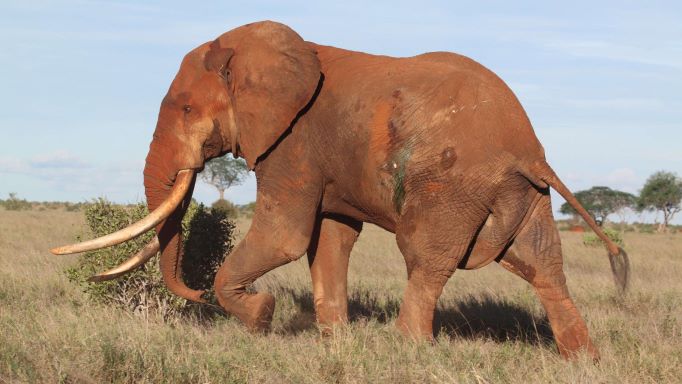With the vastness of Tsavo as our jurisdiction, in the conservation of African elephant, aircraft are an integral tool in our trade. Here at the Tsavo Trust, we rely heavily on the Super Cub class of aircraft. They are small, light-weight craft that can fly incredibly slowly and take off almost anywhere.
These qualities make them extremely useful in monitoring the lands that are eaten up as part of an elephant’s migratory routes. Many people who pass through the Tsavo Conservation Area, and many others that are interested in conservation, often ask us what exactly we look for from the skies.
In fact, in 2020, we wrote an article on five things that we look for when we use our Super Cub aircraft to patrol the skies above Tsavo. You can read that article by clicking through on this link here.
Each of the five things we detailed in that article are still scanned for from the skies, but, today, we wanted to add a few more to the list. Of course, our pilots are on the lookout for anything of interest. Their jobs are in surveillance but they are also in surveyance. Our eyes in the sky are there to ensure we have early warning of threats developing. And because that means any and all threats that our elephant face, their eyes are peeled for all sorts.
Signs of charcoal fires
Illegal charcoal kilns are, occasionally, created in the Tsavo Conservation Area and they pose a wildfire risk. Detecting charcoal kilns early in their use is incredibly important. In order to make charcoal, fires are burnt underground, at high heat and without access to oxygen.
At all times, but especially right now, the intense heats from these fires can easily become untameable and result in wildfires. Today, we are still suffering from the effects of a months-long drought and much of Tsavo is tinderbox dry.
From the skies, we search for smoke from charcoal kilns and any other detritus of their creation left behind. It is important that we find these kilns before they are lost control over. It is equally important that we are known as a potential stop-guard against the creation of kilns in the conservation area.
Our presence in the skies is as important as a deterrent against future illegal activity as it is as a means of arresting it in real time.
Wounds on our elephant
In our last article, we detailed how we will search out and monitor certain elephant individuals with our aircraft. We informed readers of how certain of the individuals we follow seem to have become acclimatised to our presence and even seem to relax when our aircraft are overhead.
We follow the Super Tuskers that are so rare and of such influential importance to the diversity of the African Savannah Elephant’s gene pool. But we also monitor any elephant that looks like it is in need of attentive care. Often, as can be seen in this article’s leading photograph, we are alerted to some sort of issue with our elephant by their bunching together.
What surprises some people about the work that our pilots do is that, from the air, we can see small arrow wounds on elephant hides. Occasionally, after being shot with an arrow, the missile will fall out and, as the wound festers, a white pussy mark can be visible even from an aircraft’s cruising height.
Our eagle-eyed pilots are trained to look out for these wounds and identify them quickly. In this photo, below, you can see the mark of one such wound.

Ground Unit Placement
Our pilots are in the constant search for growing threats. They are, as has been said, also active participants in deterrence just by being aloft. They are, also, a key component in the coordination of our conservation stratagem.
Aerial units are so well-placed when it comes to surveying the often-untameable Tsavo landscape that our pilots are important in directing ground units with their immediate knowledge of the land’s topography.
Our aircraft are often deployed in the assisting with tactical bird’s eye information for the units travelling along the ground.

